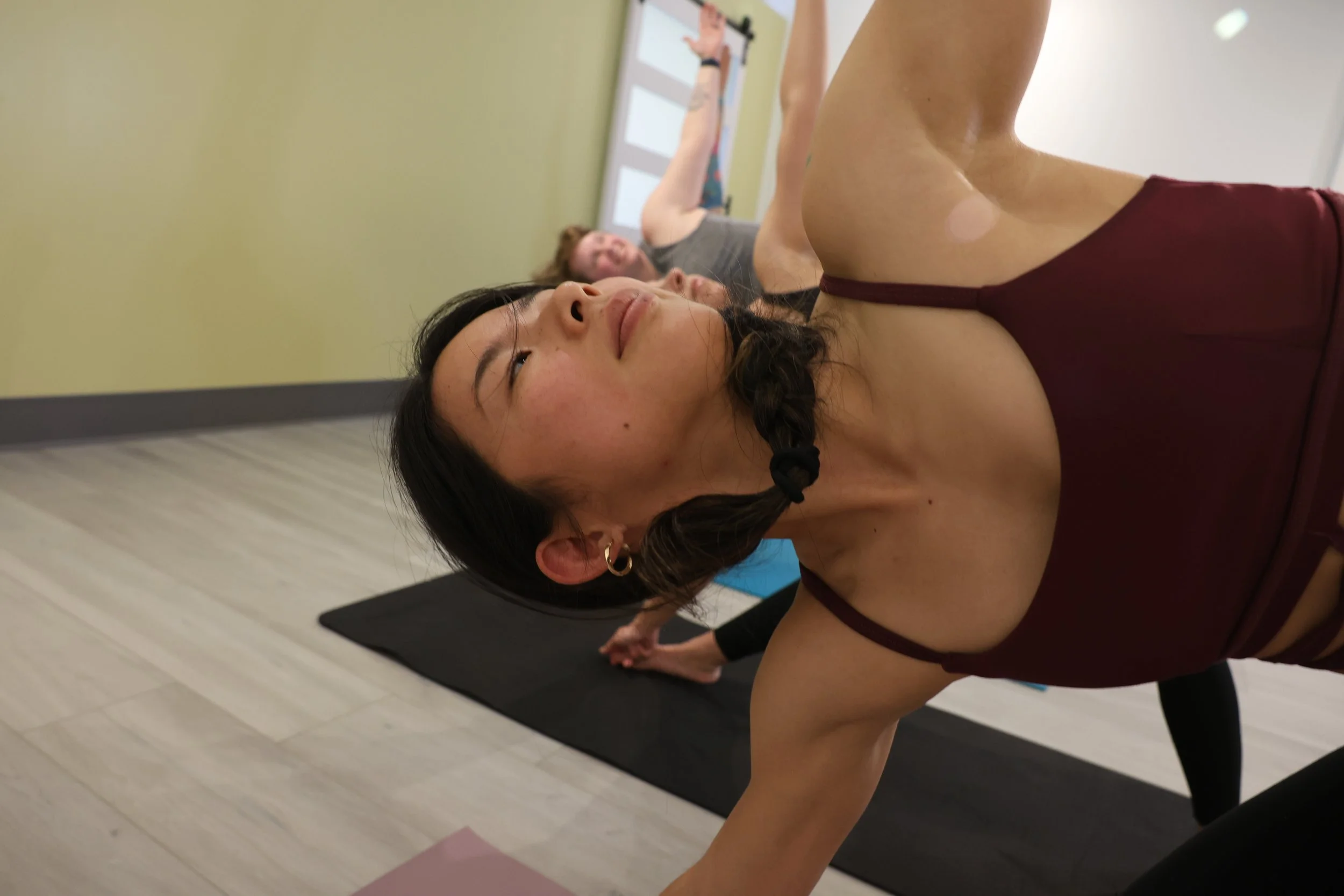What is Ashtanga Yoga?
A Brief History
The practice today known as Ashtanga Yoga was formed by Pattabhi Jois under the tutelage of T. Krishnamacharya. Adopting the name Ashtanga from the yoga sutras, these vinyasa sequences created were designed to detoxify the mind, body, and spirit (primary series, yoga chikitsa, “therapy”), cleanse the nervous system (intermediate series, nadi shodhana, “nerve cleansing”), and to build on these existing foundations of strength and flexibility with dedication and humility (advanced A, B, C, and D, shtira bhaga, strength and grace).
Paramaguru R. Sharath Jois continues the lineage by offering seasons of practice in Mysore, India, the home of Ashtanga. With teachers and students around the world, Ashtanga Yoga has touched the lives of many.
Shala = Home
“Shala” is the Sanskrit word for “home.”
To an Ashtangi, “welcome to the shala” is another way to say “welcome home.”
The Ashtanga Yoga Method
Meaning of Ashtanga
Ashta = Eight | Anga = Limb
Ashtanga = Eight Limbs
In Patanjali’s Yoga Sutras, Ashtanga is presented as a practical approach to yoga. The eight limbs are:
1. Yama (ethical disclipline)
ahimsa (non-violence)
satya (truthfulness)
asteya (non-stealing)
brahmacharya (refraining from sexual indulgence)
aparigraha (detachment)
2. Niyama (observation & purification)
sauca (cleanliness, purity)
santosha (contentment)
tapas (austerity)
svadhyaya (self-study)
ishwara-pranidhana (surrender to God/higher self)
3. Asana (postures)
4. Pranayama (breath control)
5. Pratyahara (sense withdrawal)
6. Dharana (concentration)
7. Dhyana (meditation)
8. Samadhi (consciousness itself)
Tristana Method
Breath
An intentional breathing technique is practiced during asana. By integrating breathwork during asana practice, a deep sense of presence is established and maintained. This resonating breathwork is based on Ujjayi Pranayama, often referred to as “deep breathing with sound,” also work to stimulate the vagus nerve, which is a part of the parasympathetic nervous system (the relaxation and de-stress part of the nervous system).
Posture
Every posture has a purpose: building strength and flexibility, detoxifying the body, and creating habits that allow us to live better, happier lives. The discipline of a consistent, attentive practice increases the benefits of the postures. Posture includes the use of bandhas, energetic locks, throughout the body.
Gaze
Wandering eyes equal a wandering mind. This point of focus, drishti, is used to keep the attention focusing inward. Physiologically, the gaze point can help to align the spine in a certain way or to improve (or challenge) balance.
Our Ashtanga Classes
Mysore
A traditional self-led practice of the Ashtanga series. Students move through practice independently, at their own pace and breath rhythm, through the sequence of postures that they have learned from their teacher. Students can show up any time during the Mysore session, allowing themselves adequate time for their own practice that day. First time Mysore students should allow 45-60 minutes for practice.
If you are visiting from out of town we would love to have you visit our Mysore room! Practice as you would at home, we are happy to provide practice space and will support you however we can.
Ashtanga Fundamentals
A more thorough and slower paced practice of the Ashtanga sequence. Great for beginners or practitioners to learn and refine the basics.
All-Levels Ashtanga
An abbreviated practice of the Ashtanga appropriate for all levels. This class will emphasize techniques and alignment through a progressive approach that is suitable for both newer students to learn and seasoned practitioners to practice.
Short-Form Ashtanga
An abbreviated practice of the Ashtanga method, including: sun salutations, standing sequence, postures from the primary or intermediate series, back-bending, inversions, and breathwork.
Ashtanga Primary Series
This practice is the foundation of many vinyasa flow styles. This guided primary series will move through the sequence in its entirety following a specific vinyasa count to link each movement to a designated breath. Known as “yoga chikitsa,” or “yoga therapy,” the ashtanga primary series is designed to develop strength and flexibility simultaneously, while cultivating a meditative experience.
Ashtanga Inversions
An Ashtanga-based class with a focus on arm balances or other inversions. While moving through a dynamic, full-body practice the sequencing will be geared towards building the strength, awareness, and confidence to explore a variety of challenging postures safely with intelligent progressions.




